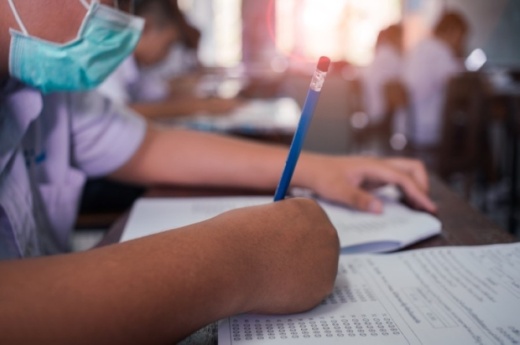District officials said they are concerned about the group of students who have participated in virtual learning all school year as these students are falling behind their peers taking their classes in person.
The African American, economically disadvantaged and Hispanic student populations respectively appear to be struggling the most, according to district data. Macias said 38% of African American students in CFISD are learning remotely, but these three subgroups have historically performed below their white and more affluent peers.
“These data are certainly indicating that the lost instructional time due to the COVID-19 pandemic has indeed created some significant learning gaps for our students,” she said. “I heard a presenter that called it not so much gaps as much as unfinished learning—they have not had the opportunity to have all the instruction, the learning that needs to be occurring.”
The district’s diagnostic tool for elementary students compared student performance from January 2020 to January 2021 and found the percentage of students reading on grade level dropped from 77% to 61%. However, reading levels have improved by about 9% overall from fall 2020 to spring 2021, Macias said.
Additionally, 78% of elementary students were hitting their math targets a year ago compared to 60% now. Data for secondary levels shows the percentage of students from various demographics who scored 70% or higher this spring on standards taught in the fall.
While 36% of remote students and 18% of on-campus students were failing at least one course in the second grading period compared to 16% of students during the same time frame in 2019-20, students taking virtual courses performed as well as or better than those taking classes in person when it came to mastering the district’s standards.
When measured against the state’s lower standards, Macias said between 82%-87% of high school students are on track to pass their end-of-course exams later this spring. Macias said several efforts are being made to help close these gaps, including opening summer school up to any student needing extra support at no cost to parents, having administrators make phone calls and visits to parents of students who are struggling, in-person and virtual tutoring opportunities, Saturday sessions being offered at some campuses, and additional resources for parents and students in the Schoology platform.
Additionally, high school teachers are offering additional chances on assignments and assessments for seniors at risk of failing classes to keep them on track to graduate, she said.
“Our teachers are doing a fantastic job, but there’s a lot of missed instructional time just because of the situation that we’re in,” Macias said. “They’ve got their groups going in their classroom; they have their groups going virtually, and it takes time to go from group to group to group.”





